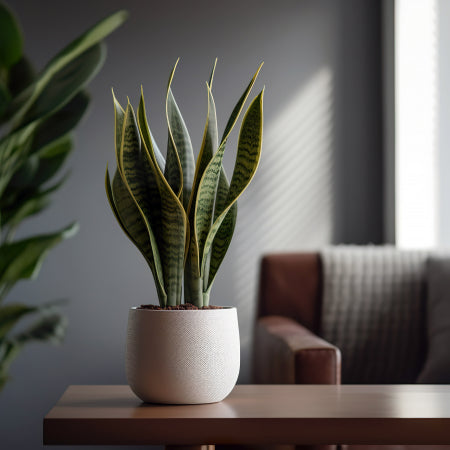10 must have Philodendrons varieties
Philodendrons are beloved indoor plants that come in a wide array of shapes, sizes, and colours. This gorgeous plant is perfect for indoors as well as outdoor gardens, and since it is easy to take care of, it is a good option for beginner plant parents too.
There are 480 recognized species of philodendrons in different colours and sizes, and it can be overwhelming to choose just one.
To make things easier, we’ve compiled the 10 must-have philodendrons varieties.
10 must-have Philodendrons Varieties
Pink Princess
Scientific name: Philodendron Erubescens
Who says plants have to be green and dull? Let’s kick this list off with something bold and pink. This striking plant is known for its cotton candy pink spots and patterns on its leaves, making it highly sought-after by collectors.
Also called the blushing philodendron, it is a low-maintenance compact plant perfect for indoors, reaching a maximum height of two to four feet.
This tropical plant thrives on bright indirect light and well-drained soil similar to the conditions of a rainforest. If placed in the shade, it might appear dull, and it might eventually lose its bright colours.
White knight : A Philodendrons varieties
Scientific name: Philodendron White Knight
The white knight is just as stunning and a showstopper of a plant, but its shade of white gives it an elegant touch. It is one of the rarest and most expensive varieties of philodendron.
Native to South America, it has beautiful, round, heart-shaped leaves and requires a tropical-type environment. This low-maintenance plant can occasionally flower if it has the proper climate to grow and mature, but its flower is not as impressive as the plant itself. The dark leaves combined with the white make it a stellar showpiece.
Philodendron 'Prince of Orange'
Scientific Name: Philodendron Prince of Orange
The next plant on this colourful list is the Prince of Orange; it features leaves with magnificently bright orange variegations and colouring that just grab attention in any room. These orange or red leaves turn a shade of green as they mature.
Its leaves are tightly clustered around the central stem because it is a self-heading Philodendron, which gives it an upright appearance. Like most philodendrons varieties, it requires bright, indirect light to flourish.
Brandtianum (Philodendrons varieties)
Scientific name: Philodendron Brandtianum
This gorgeous vining plant has deep green heart-shaped leaves with charming silver striations, giving it its other name, Silver Leaf Philodendron. It has a bushy appearance and grows upright despite being a vining plant, but can have hanging vines after they mature.
For it to properly show off its variegation, it requires indirect sunlight; it also requires humidity, and it requires misting every now and then. Emerging leaves feature a yellow-orange hue that morphs into dark green and silver shades when mature.
Rojo Congo
Scientific name: Philodendron red Congo
Only feed your snake plant during the growing season (early spring to late summer).
If overfertilized, remove infected roots using sterilized scissors and repot the plant in fresh, well-draining soil.
Birkin: Philodendrons varieties
Scientific Name: Philodendron Hederaceum Birkin
They are categorised by their distinctive glossy, heart-shaped leaves with unique variegation patterns that display a mix of dark green and creamy-white stripes.
This Philodendron variety only reaches one or two feet in height, and it is believed to have air-purifying properties, making it the perfect indoor plant.
Heartleaf Philodendron
Scientific Name: Philodendron Hederaceum
Its beautiful, heart-shaped, jade green leaves make it an attractive houseplant. Also known as the sweetheart plant, it is native to Central America and the Caribbean.
This type of Philodendron can thrive outside in climate zones 10 or 11 that have no risk of frost or cold temperatures. It is a great choice for hanging baskets and planters.
Philodendron ceylon golden
Scientific Name:Philodendron Erubescens
Ceylon Gold is known for its paddle-shaped yellow-green leaves with prominent ripples and a unique wavy edge. It has a glossy texture, making it more elegant.
With its manageable size, undemanding care requirements, and Ceylon Gold’s air-purifying properties, you’ve got a winning houseplant.
Philodendron Hope Selloum
Scientific name: Thaumatophyllum bipinnatifidum
The Hope Selloum plant, also known as the Lacey Tree, is native to South America and makes a perfect ornamental plant in warmer climates like Australia, Asia, and parts of the USA.
Popular for its eye-catching, sculptural leaves, its leaves have elongated, narrow green lobes that grow in all directions from the stem.
For it to grow and thrive, place it in a spot with bright indirect light, avoid overwatering it, and maintain moisture in the soil.
Philodendron Xanadu
Scientific Name: Thaumatophyllum Xanadu
This tropical plant is also known as the Philodendron Winterbourn and features shiny leaves with multiple lobes perched on long, sturdy stems. It grows upright but is wider than it is long, making it perfect for wide, open spaces.
This Philodendron variety, native to Brazil, is easy to care for. Its thick foliage can easily convert any space into a tropical jungle.
Philodendrons are terrific additions if you want to add a jungle or tropical feel to a space. They are very beginner-friendly and do not even require direct sunlight, making them perfect even for the tiniest homes. Also, there is a wide variety to choose from, and there are so many things you can do with philodendrons. Once you’ve made up your mind on which ones you want to get, you read this blog on how to care for philodendrons.







